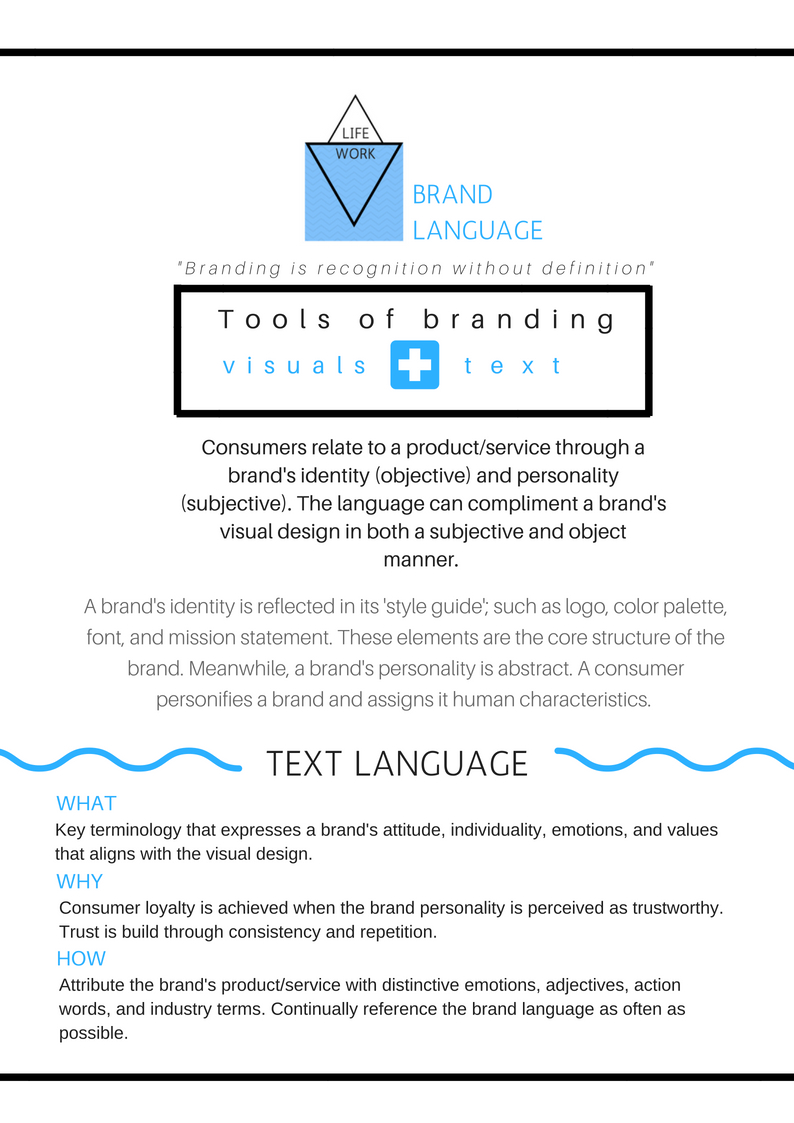The best definition of branding is,
"recognition without definition."
The phrase is succinct but has layers of meaning. In semiotic terms, branding is the umbrella that contains all professional communication. Marketing, Advertising, PR, social platforms, and content creation are all tools of branding. These tools use visuals and text as a combined language. Together they create meaning that does not need explicit definition. If done well, your target audience can recognize the significance of your brand on their own.
Companies often spend less energy on their brand's text. They put their focus on the visuals. It's true, consumers notice images first but weak text can kill a sale. Every brand must build a list of adjectives, emotions, and traits. Once you have your cache, find ways to constantly use them.
Now let's take it deeper. Your brand should have a personality. The reason is that humans personify inanimate things. As a brand, you want consumers to build an emotional connection (read: a willingness to buy).
Here's how you separate brand identity from brand personality. Your identity is concrete and objective. It's a matter of fact. Your personality is abstract and subjective. Its an interpretation. LIFEWORK designed this worksheet to expand on the use of text in your brand language.
If you would like more information on this topic, please contact us with follow-up questions.
